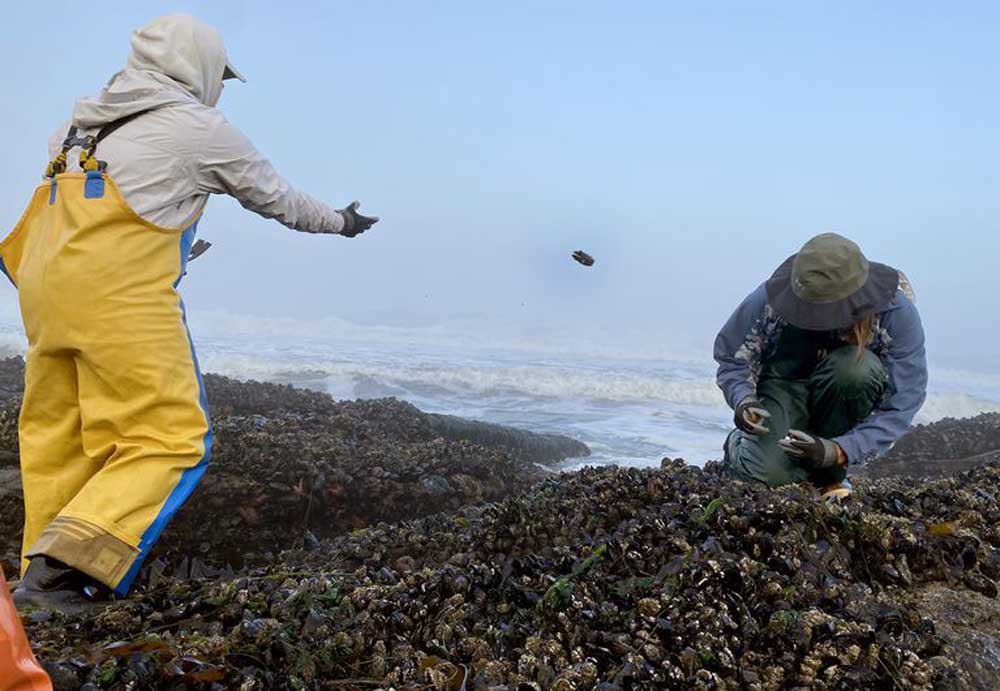
Mussel harvesting along the Oregon Coast, from the Washington border to Florence, has been suspended following the detection of paralytic shellfish toxins in recent samples. The Oregon Department of Agriculture (ODA) and the Oregon Department of Fish and Wildlife (ODFW) made the announcement on September 30, 2025, citing health risks associated with consuming contaminated mussels. These toxins can lead to symptoms such as numbness, nausea, and in severe cases, paralysis.
The biotoxin is naturally produced by phytoplankton and tends to accumulate in marine organisms, particularly mussels. According to Matt Hunter, the ODFW shellfish project leader, “Mussels are the canary in the mine shaft.” This means they are more prone to accumulating the paralytic shellfish toxin (PST) than many other marine species.
The risk associated with these toxins is underscored by a 2024 outbreak that resulted in over 40 illnesses, with several individuals requiring hospitalization. Hunter noted that since that incident, monitoring efforts have intensified. He explained, “Everything has us on our toes.” The rapid accumulation of PST in mussels poses challenges for researchers, as testing can only occur during low tides. This limitation creates uncertainty in determining whether toxin levels are rising or falling.
Researchers will conduct biweekly tests for shellfish toxins. Mussel harvesting may resume once two consecutive tests show safe toxin levels. The earliest possible reopening is tentatively scheduled for the end of October.
Shellfish specialist Alex Manderson from the ODA’s food safety division highlighted the unpredictable nature of phytoplankton behavior. “It is not very well understood,” he stated. Environmental factors such as temperature, light intensity, and water chemistry likely play a role in toxin production, but the exact mechanisms remain unclear.
While current toxin levels in the water are not harmful to humans or pets, mussels concentrate these toxins to dangerous levels. Manderson emphasized that cooking or freezing contaminated mussels does not eliminate the hazard. “It is basically a poison, so it doesn’t grow or diminish,” he added.
Despite the toxin levels not being classified as lethal at present, Manderson advised caution. “The levels that we saw are not super high, but definitely not a thing to mess about with,” he said. The neurotoxin can cause serious illness, with symptoms ranging from numbness and tingling to gastrointestinal distress.
Hunter further warned of the rapid changes in toxin levels during the 2024 outbreak, where levels surged from below the closure threshold to an alarming 69 times the threshold within just four days. This history underscores the importance of ongoing monitoring and public safety measures in the region.
As the situation develops, both the ODA and ODFW remain vigilant, prioritizing public health and the safety of seafood consumers along the Oregon Coast.







